
The Jewel of the Highlands: Lake Atitlán
Explore Lake Atitlán: A breathtaking fusion of natural beauty, vibrant culture, and rich Mayan history in the heart of Guatemala's highlands.
Nestled in the Guatemalan Highlands, Lake Atitlán is often described as one of the most beautiful lakes in the world. Surrounded by three towering volcanoes—San Pedro, Atitlán, and Tolimán—the lake offers stunning views that change with the shifting light and weather. It's a place where nature and culture blend seamlessly, creating an enchanting atmosphere for visitors. The villages around the lake each have their own unique charm. Panajachel is the most accessible and has a bustling market where you can find local crafts and textiles. San Juan La Laguna is known for its art and weaving cooperatives, and you can visit workshops to see how traditional crafts are made. For a more serene experience, head to Santa Cruz La Laguna, where you can relax by the water and enjoy the tranquility. Outdoor enthusiasts will find plenty to do around Lake Atitlán. Hiking trails offer breathtaking views of the lake and surrounding volcanoes. You can also go kayaking or paddleboarding on the lake's clear waters. If you're interested in the local culture, take a boat ride to explore different villages, each with its own traditions and way of life. The region is rich in Mayan history, and you can learn about ancient practices and beliefs from the locals themselves.
Local tips in Lake Atitlán
- Bring cash: Many of the smaller villages and markets do not accept credit cards.
- Learn basic Spanish: While some locals speak English, knowing a few Spanish phrases will enhance your experience.
- Respect local customs: Be mindful of traditional practices and dress modestly, especially in more rural areas.
- Stay in different villages: Each village around the lake offers a unique experience, so try to spend time in more than one.
- Use local transport: Boats or 'lanchas' are the primary mode of transport between villages and offer a scenic way to travel.
- Pack for varied weather: The highlands can be cool in the morning and evening but warm during the day.
- Visit the markets early: For the best selection of local crafts and produce, visit the markets early in the day.
The Jewel of the Highlands: Lake Atitlán
Nestled in the Guatemalan Highlands, Lake Atitlán is often described as one of the most beautiful lakes in the world. Surrounded by three towering volcanoes—San Pedro, Atitlán, and Tolimán—the lake offers stunning views that change with the shifting light and weather. It's a place where nature and culture blend seamlessly, creating an enchanting atmosphere for visitors. The villages around the lake each have their own unique charm. Panajachel is the most accessible and has a bustling market where you can find local crafts and textiles. San Juan La Laguna is known for its art and weaving cooperatives, and you can visit workshops to see how traditional crafts are made. For a more serene experience, head to Santa Cruz La Laguna, where you can relax by the water and enjoy the tranquility. Outdoor enthusiasts will find plenty to do around Lake Atitlán. Hiking trails offer breathtaking views of the lake and surrounding volcanoes. You can also go kayaking or paddleboarding on the lake's clear waters. If you're interested in the local culture, take a boat ride to explore different villages, each with its own traditions and way of life. The region is rich in Mayan history, and you can learn about ancient practices and beliefs from the locals themselves.
When is the best time to go to Lake Atitlán?
Iconic landmarks you can’t miss
Reserva de Uso Múltiple la Cuenca del Lago de Atitlán
Explore the breathtaking beauty and diverse ecosystems of Reserva de Uso Múltiple la Cuenca del Lago de Atitlán, a must-visit nature preserve in Guatemala.
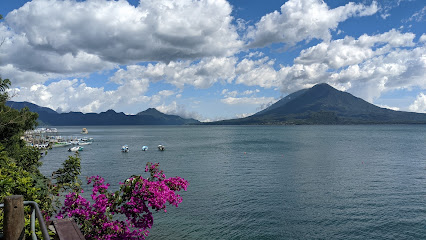
Reserva Natural Atitlán
Explore the breathtaking landscapes, wildlife, and adventures at Reserva Natural Atitlán, a top destination for nature lovers in Guatemala.

Mirador del Lago Atitlán
Explore the stunning vistas at Mirador del Lago Atitlán, where the beauty of nature meets the tranquility of Guatemala's iconic lake.

Reserva Natural Cerro Tzankujil
Discover the breathtaking landscapes and rich biodiversity of Reserva Natural Cerro Tzankujil, a premier nature preserve in San Marcos La Laguna, Guatemala.

Eagle's Nest Atitlán - Yoga, Dance & Community
Discover tranquility and wellness at Eagle's Nest Atitlán, where yoga, community, and breathtaking lake views await.

Playa Pública Chinim ya', Santiago Atitlán
Discover paradise at Playa Pública Chinim Ya, a beautiful public beach on Lake Atitlán, offering stunning views, relaxation, and a taste of local culture.
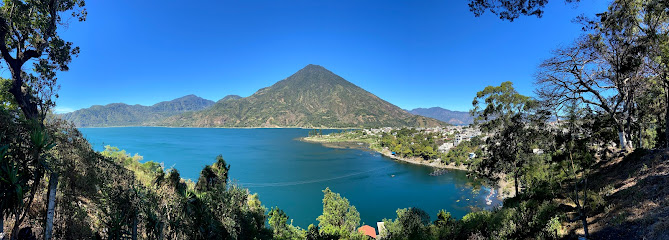
Museo Lacustre de Atitlan
Explore the underwater archaeology and rich cultural heritage of Lake Atitlan at the captivating Museo Lacustre de Atitlan in Panajachel, Guatemala.

Mayan Face / Indian Nose Viewpoint
Discover the breathtaking vistas of Lake Atitlán at the Mayan Face / Indian Nose Viewpoint, a must-visit attraction in San Juan La Laguna.

Parque Xechivoy
Explore the tranquil beauty of Parque Xechivoy, a serene park in Santiago Atitlán perfect for nature lovers and cultural enthusiasts alike.
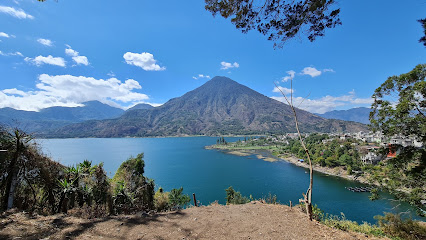
Lake Atitlan
Experience the breathtaking beauty and rich culture of Lake Atitlán, a stunning gem surrounded by volcanoes and vibrant indigenous communities.

Mirador Kaqasiiwaan
Experience the stunning beauty of Lake Atitlán from Mirador Kaqasiiwaan, a scenic viewpoint in San Juan La Laguna offering unforgettable views and local culture.
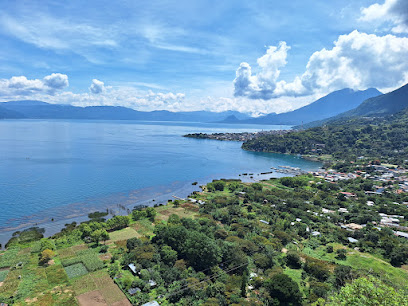
Playa Las Cristalinas, San Pablo La Laguna.
Experience the tranquil beauty of Playa Las Cristalinas, a serene escape on the shores of Lago de Atitlán surrounded by breathtaking volcanoes.

Casa Cakchiquel | Panajachel
Discover the vibrant culture and art of Guatemala at Casa Cakchiquel, a unique cultural center in Panajachel offering art, cuisine, and relaxation.

Tzunun' Ya'
Explore Tzunun' Ya' in San Pedro La Laguna, a museum celebrating the vibrant culture and history of Guatemala's indigenous communities.

Lago Atitlán
Explore the stunning beauty of Lago Atitlán, Guatemala's breathtaking lake surrounded by volcanoes and vibrant indigenous culture.

Unmissable attractions to see
Sitio Arqueológico Iximche
Explore the ancient ruins of Iximché, a stunning archaeological site in Tecpán Guatemala, reflecting the grandeur of the Maya civilization.

Xocomil
Experience the ultimate water adventure at Xocomil Water Park in Retalhuleu, Guatemala—where fun meets relaxation under the sun.

Reserva Natural Atitlán
Experience the enchanting beauty of Reserva Natural Atitlán, a nature preserve offering stunning views and diverse wildlife in Panajachel, Guatemala.

Reserva Natural Cerro Tzankujil
Explore the natural beauty and stunning vistas of Reserva Natural Cerro Tzankujil, a tranquil haven in San Marcos La Laguna, Guatemala.

Plaza y Mercado Santo Tomás
Discover the lively essence of Guatemalan culture at Plaza y Mercado Santo Tomás in Chichicastenango, a must-visit market for every traveler.

Eagle's Nest Atitlán - Yoga, Dance & Community
Discover tranquility and community at Eagle's Nest Atitlán, a resort hotel offering yoga, dance, and breathtaking views of Lake Atitlán.

Volcan acatenango
Explore the breathtaking Acatenango Volcano in Guatemala, a hiker's paradise offering stunning views and unique volcanic experiences.

V-Hiking Tours
Discover the breathtaking beauty of Guatemala with V-Hiking Tours, offering unforgettable hiking adventures and nature exploration in Chimaltenango.
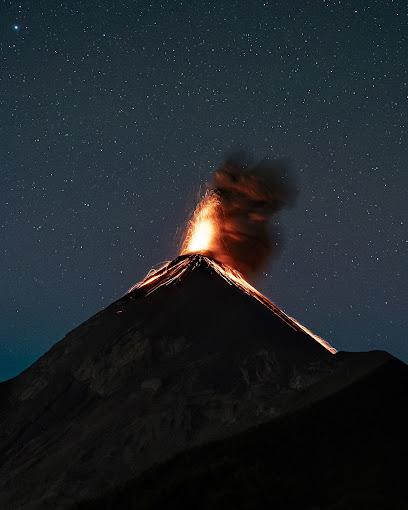
Iglesia de Santo Tomás
Explore the rich history and vibrant culture of Iglesia de Santo Tomás, a stunning Catholic church in the heart of Chichicastenango, Guatemala.

Volcán de fuego
Discover the breathtaking Volcán de Fuego, an active volcano in Guatemala, offering stunning views and thrilling hiking adventures in a picturesque setting.

Trailhead to Mirador Kaqasiiwaan, San Juan la Laguna
Experience the breathtaking views and vibrant culture at the Trailhead to Mirador Kaqasiiwaan in San Juan la Laguna, a must-visit for every traveler.
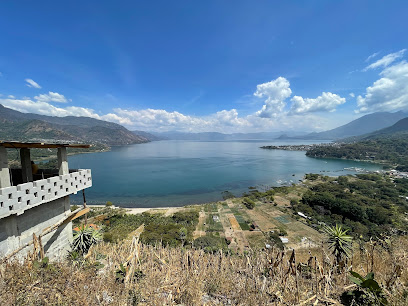
House of Botran and Museum
Explore the House of Botran in Quetzaltenango, where Guatemalan rum culture comes alive through immersive experiences and exquisite tastings.

Chicabal Lake
Discover the serene beauty and cultural significance of Chicabal Lake, a hidden gem in Guatemala's lush highlands, perfect for nature lovers and adventurers.

Estadio Municipal San Juan Bautista
Experience the vibrant culture and passionate sportsmanship at Estadio Municipal San Juan Bautista in San Juan La Laguna.

Casa Flor Ixcaco Weaving Cooperative
Discover the vibrant weaving traditions of Guatemala at Casa Flor Ixcaco in San Juan La Laguna, where artistry and culture intertwine.
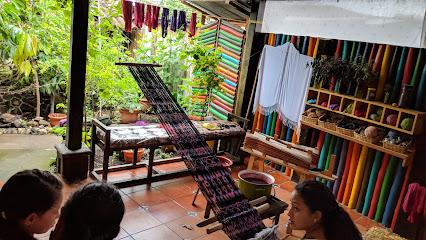
Essential places to dine
Circus Bar
Experience authentic Italian flavors at Circus Bar in Panajachel – home to delicious pizzas and gluten-free options amidst stunning surroundings.

Sababa Restaurant
Discover the vibrant tastes of Guatemala at Sababa Restaurant in San Pedro La Laguna - where local ingredients meet international flair.

Guajimbo's
Discover authentic Uruguayan cuisine at Guajimbo's in Panajachel - a culinary gem offering rich flavors and a cozy dining atmosphere.

Deli Jasmin
Experience the best of Guatemalan cuisine at Deli Jasmin in Panajachel - where every dish tells a story.

Atitlán Rest y Café
Experience delicious Guatemalan cuisine at Atitlán Rest y Café with stunning views of Lake Atitlán in Panajachel.

La Iguana Perdida
Discover La Iguana Perdida: A vibrant restaurant and hostel offering delicious food, lively atmosphere, and rich cultural experiences by Lake Atitlán.

Cafe Sabor Cruceño
Discover authentic Guatemalan cuisine at Café Sabor Cruceño, where breathtaking views meet local flavors in Santa Cruz la Laguna.

Posada Schumann
Discover exquisite Guatemalan cuisine with stunning views at Posada Schumann in San Marcos La Laguna.
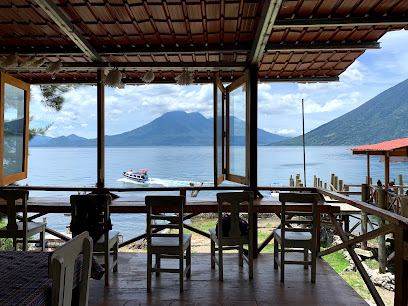
Restaurante el Pescador de Santiago Atitlan, Sololá, Guatemala.
Experience authentic Guatemalan cuisine with stunning lake views at Restaurante el Pescador de Santiago Atitlán.
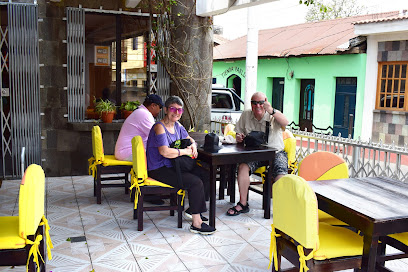
Restaurante El Maná
Discover authentic Guatemalan cuisine at Restaurante El Maná in Santiago Atitlán with stunning lake views.

Restaurante Café Arte
Experience exquisite local flavors with breathtaking views at Restaurante Café Arte by Lake Atitlán.

Tuscani
Discover Tuscani in Panajachel for a delightful culinary experience blending local flavors with international cuisine.

Café y Restaurante Alma De Colores
Discover authentic Guatemalan flavors at Café y Restaurante Alma De Colores in San Juan la Laguna - where every meal tells a story.

Moonfish Cafe
Discover authentic Guatemalan flavors at Moonfish Cafe in San Marcos La Laguna - where every meal is a celebration of fresh ingredients.
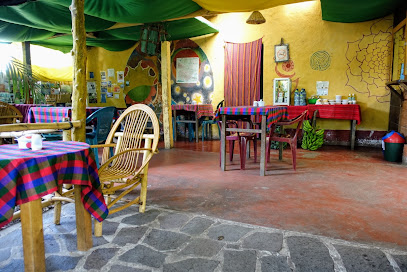
Vida
Experience exquisite dining at Vida in San Marcos La Laguna, where local flavors meet stunning views of Lake Atitlán.

Markets, malls and hidden boutiques
Manos Cruceñas Artisan Store
Explore the vibrant craftsmanship of Guatemala at Manos Cruceñas Artisan Store, where every purchase supports local artisans and their rich cultural heritage.

TROPICA VINTAGE
Explore Tropica Vintage, a treasure trove of vintage clothing and unique gifts in the heart of Panajachel, Guatemala.

Abracadabra
Discover unique Guatemalan treasures and handcrafted souvenirs at Abracadabra, the must-visit gift shop in Panajachel.

Micelanea Luminares
Discover unique local crafts and modern fashion at Micelanea Luminares in Santiago Atitlán, a vibrant outlet store showcasing Guatemalan artistry.

Tienda de Cerámica STONEWARE Mayan-ke
Explore the vibrant artistry of Guatemalan ceramics at Tienda de Cerámica STONEWARE Mayan-ke, a must-visit gift shop in Panajachel.

BORDADOSHOP (Trajes Típicos y más)
Discover the essence of Guatemalan culture through beautifully crafted clothing and textiles at BORDADOSHOP in Santiago Atitlán.

Atitlán women weavers
Explore the colorful world of Atitlán Women Weavers, where traditional Guatemalan craftsmanship meets vibrant artistry in every handmade piece.
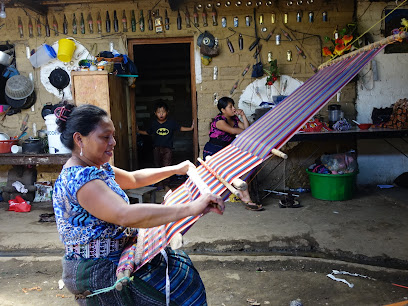
Tienda de María- Textiles
Discover the vibrant world of Guatemalan textiles at Tienda de María in Santiago Atitlán, where tradition meets artistry and culture.

Ropas Típicas Sureli
Discover the essence of Guatemalan culture at Ropas Típicas Sureli, where traditional attire meets vibrant craftsmanship in Santiago Atitlán.

BOUTIQUE, ZEBRA
Explore Boutique Zebra in Santiago Atitlán for unique clothing that captures the vibrant spirit of Guatemala's culture.

Totis Shop
Discover unique Guatemalan gifts and artisan crafts at Totis Shop in Panajachel—a must-visit for every tourist seeking authentic souvenirs.

Utz Pot San Pablo
Experience the essence of Guatemalan culture through clothing at Utz Pot San Pablo, Panajachel's vibrant boutique showcasing traditional textiles.

CREACIONES SNARS
Explore Creaciones Snars: A vibrant paintings store in Santiago Atitlán showcasing Guatemalan artistry and culture.

Boutique la buena moda
Explore Boutique la Buena Moda in Santiago Atitlán for unique local crafts, stylish apparel, and a taste of Guatemalan culture.

Tienda y papelería La Esperanza
Explore Tienda y Papelería La Esperanza for unique home goods and local crafts in the heart of Santiago Atitlán, Guatemala.

Essential bars & hidden hideouts
Circus Bar
Discover the taste of Italy in Panajachel at Circus Bar, famous for its delicious pizzas and gluten-free options, perfect for every traveler.

Pana Rock
Experience the vibrant nightlife and stunning views at Pana Rock, a lively bar in the heart of Panajachel, ideal for unwinding by Lake Atitlán.

Bar Sublime
Experience the lively nightlife of San Pedro La Laguna at Bar Sublime, where delicious drinks and vibrant music create unforgettable moments.

Simoneta Mixology Cantina
Experience the best of Panajachel nightlife at Simoneta Mixology Cantina, where unique cocktails and a lively atmosphere await!

Selina Beach Bar
Discover the vibrant Selina Beach Bar in Panajachel for stunning views, refreshing drinks, and a lively atmosphere on the shores of Lake Atitlán.

Blind Lemon's
Discover the culinary delights and lively entertainment at Blind Lemon's, the top spot for food and live music in San Marcos La Laguna.
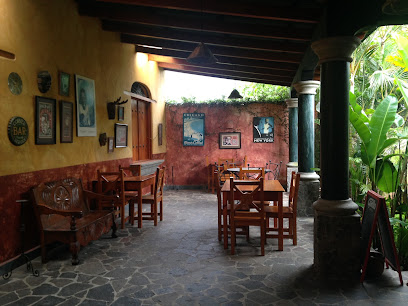
El Tecomate Cocktail Bar
Experience the vibrant nightlife at El Tecomate Cocktail Bar in Panajachel, where unique cocktails meet stunning views of Lake Atitlán.

El Roof
Experience vibrant flavors and stunning views at El Roof, the premier grill in Panajachel, Guatemala, perfect for tourists and food lovers alike.

Ranchito Atitlan
Experience an authentic sports bar vibe at Ranchito Atitlan, where local culture meets delicious food and stunning views of Lake Atitlán.

Hanna's Bar
Experience the vibrant nightlife at Hanna's Bar in Panajachel, where locals and travelers unite over great drinks and lively atmosphere.

The Pool Bar & Grill
Experience the vibrant atmosphere of The Pool Bar & Grill in San Pedro La Laguna, where refreshing drinks meet stunning views and a relaxing poolside vibe.

Small Bar La Azotea
Discover the enchanting Small Bar La Azotea in Panajachel, where stunning views meet delicious cocktails in a vibrant atmosphere.

Amaranto Bar
Discover the enchanting ambiance of Amaranto Bar in Panajachel, where refreshing drinks meet stunning views and vibrant local culture.

Snak Bar Bistro
Experience the vibrant atmosphere of Snak Bar Bistro in Santiago Atitlán, where local flavors and breathtaking views come together.
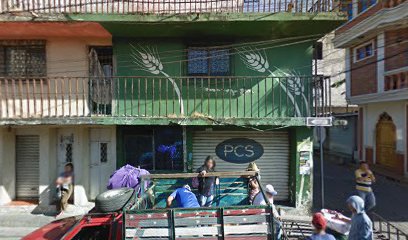
La Terraza Atitlan
Experience the flavors of Guatemala at La Terraza Atitlan, where delicious grill dishes meet breathtaking views of Lake Atitlán.

Local Phrases
-
- HelloJi'
[hee] - GoodbyeXaqa'e
[shack-eye] - YesE'
[eh] - NoMan
[mahn] - Please/You're welcomeTz'ikin
[tzee-keen] - Thank youMatyox
[mah-chohsh] - Excuse me/SorrySaqarik
[sah-kah-reek] - How are you?La q'ij
[lah kee] - Fine. And you?Ta q'an
[tah kahn] - Do you speak English?Xkanajik ri inglés?
[shkah-nah-heek ree een-gless] - I don't understandMan utz
[mahn oots]
- HelloJi'
-
- I'd like to see the menu, pleaseChamoq' u suq'il, xk'amkaj
[chah-mohk oo sookeel, shkahm-kahkh] - I don't eat meatKo xin wach
[koh sheen wahch] - Cheers!Chin ch'in
[cheen cheen] - I would like to pay, pleaseChamoq' u chik', xk'amkaj
[chah-mohk oo cheek, shkahm-kahkh]
- I'd like to see the menu, pleaseChamoq' u suq'il, xk'amkaj
-
- Help!Awa'
[ah-wah] - Go away!Ch'ut
[choot] - Call the Police!Xtzijik ri Policia!
[shkee-heek ree poh-lees-eeah] - Call a doctor!Xtzijik ri tataq' q'ij
[shkee-heek ree tah-tahk kee] - I'm lostManik xtinamit
[mahn-eek shtee-nah-meet] - I'm illManik wach
[mahn-eek wahch]
- Help!Awa'
-
- I'd like to buy...Chamoq' u k'etzal...
[chah-mohk oo kaytzahl] - I'm just lookingXin chik
[sheen cheek] - How much is it?Ji' xk'aslemal?
[hee shkah-sleh-mahl] - That's too expensiveK'aslemalaj
[kah-sleh-mahl-ahkh] - Can you lower the price?Xk'aslemalaj rutz'qij?
[shkah-sleh-mahl-ahkh roots-kee]
- I'd like to buy...Chamoq' u k'etzal...
-
- What time is it?Ji' xaqa
[hee shack-ah] - It's one o'clockXaqa' jun
[shack-ah hoon] - Half past (10)Jun ajaw (oje)
[hoon ah-hahw (oh-heh)] - MorningQ'ij
[kee] - AfternoonQ'ara
[kah-rah] - EveningQ'ab'äl
[kahb-ahl] - YesterdayXaqa' iximulew
[shack-ah ees-ee-moo-leh-oo] - TodayXaqa'
[shack-ah] - TomorrowXaqa' iximulew
[shack-ah ees-ee-moo-leh-oo] - 1Jun
[hoon] - 2Kab'lajun
[kahb-lah-hoon] - 3Oxlahun
[oh-shlah-hoon] - 4Kajun
[kah-hoon] - 5Junajun
[hoon-ah-hoon] - 6Wajxaq
[wah-shack] - 7Waqxaq
[wahk-shack] - 8B'elxaq
[bel-shack] - 9B'ajxq'ij
[bahsh-kee] - 10Jun ajaw
[hoon ah-hahw]
- What time is it?Ji' xaqa
-
- Where's a/the...?Ji' u...
[hee oo] - What's the address?Ji' q'ijilajab'?
[hee kee-hee-lah-hahb] - Can you show me (on the map)?Xtzijik ri tz'ib'aj?
[shkee-heek ree tzeeb-ahkh] - When's the next (bus)?Ji' wa kitz'ojil (tz'ibal)?
[hee wah keetz-oh-hil tzee-bahl] - A ticket (to ....)U q'alaj (atz'in...)
[oo kah-lahkh aht-seen]
- Where's a/the...?Ji' u...
History of Lake Atitlán
-
Lake Atitlán has been inhabited since pre-Columbian times by the Maya people. The lake’s surrounding villages, such as San Juan La Laguna and Santiago Atitlán, were significant sites for the Tz'utujil and Kaqchikel Maya civilizations. These groups thrived on agriculture, fishing, and trade, leveraging the fertile volcanic soil and the lake’s resources.
-
In the early 16th century, Spanish Conquistadors led by Pedro de Alvarado arrived in the region. The conquest brought dramatic changes to the indigenous way of life. Many Maya were converted to Christianity, and Spanish colonial architecture began to appear, blending with traditional Maya structures.
-
One of the most cherished local legends is the story of Xocomil, a powerful wind that sweeps across the lake. According to tradition, it is the spirit of a Maya warrior who drowned in the lake. This legend underscores the deep connection between the local people and the natural forces of the lake.
-
The Tzutujil and Kaqchikel Maya communities maintain a rich cultural heritage around Lake Atitlán. Traditional weaving, ceramics, and music are integral parts of daily life. The famous textiles, often adorned with intricate patterns and vibrant colors, tell stories of the people’s history and cosmology.
-
Father Stanley Rother, an American priest, became a significant figure in Santiago Atitlán during the Guatemalan Civil War. He worked to support the indigenous communities and was martyred in 1981. His legacy is a testament to the resilience and faith of the local people during a time of great strife.
-
In the 20th and 21st centuries, Lake Atitlán has transformed into a popular tourist destination. The towns around the lake, like Panajachel and San Pedro La Laguna, have developed infrastructure to accommodate travelers. This has brought economic benefits but also challenges in preserving the area’s natural beauty and cultural integrity.
Lake Atitlán Essentials
-
Lake Atitlán is located in the highlands of Guatemala. The nearest major international airport is La Aurora International Airport in Guatemala City, around 120 kilometers away. From Guatemala City, you can take a shuttle, private car, or chicken bus to Panajachel, the main gateway town to Lake Atitlán. The journey typically takes 3 to 4 hours by road. Alternatively, you can hire a private driver for a more comfortable and direct route.
-
Once you're at Lake Atitlán, boats are the primary mode of transportation between the lakeside towns. Public boats (lanchas) run frequently and are affordable. Tuk-tuks and taxis are available within the towns for shorter trips. Renting a scooter or bike is also an option for exploring the area. For those who prefer a more structured itinerary, guided tours are available.
-
The official currency in Guatemala is the Guatemalan Quetzal (GTQ). Credit cards are accepted in most hotels, restaurants, and larger shops, but it's advisable to carry cash, especially in smaller towns and markets. ATMs are available in Panajachel and other major towns around the lake, but ensure you have enough cash before heading to more remote areas.
-
Lake Atitlán is generally safe for tourists, but it's important to exercise standard precautions. Avoid walking alone at night, particularly in secluded areas. Petty theft can occur, so keep an eye on your belongings. Some areas, like parts of San Pedro La Laguna and Santiago Atitlán, have higher crime rates targeting tourists; it's best to stay vigilant and avoid these areas at night.
-
In case of emergency, dial 110 for police or 120 for an ambulance. The main medical facilities are located in Panajachel, with smaller clinics in other towns. It's advisable to have travel insurance that covers medical emergencies. Pharmacies are available in most towns for over-the-counter medications.
-
Fashion: Do dress modestly, especially when visiting indigenous communities. Avoid wearing very revealing clothing. Religion: Do respect local customs and religious practices. Always ask for permission before entering a church or taking photos of religious ceremonies. Public Transport: Do be patient when using public transport, as it can be crowded. Don’t eat or drink on public transport. Greetings: Do greet people with a smile and say 'Buenos días' (Good morning) or 'Buenas tardes' (Good afternoon). Eating & Drinking: Do try local dishes and accept food offerings graciously. Don’t refuse hospitality, as it is considered impolite.
-
To experience Lake Atitlán like a local, visit the markets in towns like Panajachel and Santiago Atitlán where you can buy fresh produce and traditional handicrafts. Engage with locals, who are often friendly and willing to share insights about their culture and history. Don't miss the opportunity to hike the Indian Nose for a breathtaking sunrise view of the lake. For a unique cultural experience, participate in a traditional Mayan ceremony.
Trending Landmark in Lake Atitlán
-
Reserva de Uso Múltiple la Cuenca del Lago de Atitlán
-
Reserva Natural Atitlán
-
Mirador del Lago Atitlán
-
Reserva Natural Cerro Tzankujil
-
Eagle's Nest Atitlán - Yoga, Dance & Community
-
Playa Pública Chinim ya', Santiago Atitlán
-
Museo Lacustre de Atitlan
-
Mayan Face / Indian Nose Viewpoint
-
Parque Xechivoy
-
Lake Atitlan
-
Mirador Kaqasiiwaan
-
Playa Las Cristalinas, San Pablo La Laguna.
-
Casa Cakchiquel | Panajachel
-
Tzunun' Ya'
-
Lago Atitlán
Nearby Cities to Lake Atitlán
-
Things To Do in Panajachel
-
Things To Do in Chichicastenango
-
Things To Do in Quetzaltenango
-
Things To Do in Antigua Guatemala
-
Things To Do in Guatemala City
-
Things To Do in Chalchuapa
-
Things To Do in Santa Ana
-
Things To Do in Copán Ruinas
-
Things To Do in San Salvador
-
Things To Do in La Libertad
-
Things To Do in Suchitoto
-
Things To Do in Santa Rosa de Copán
-
Things To Do in Rio Dulce
-
Things To Do in Gracias
-
Things To Do in Flores












